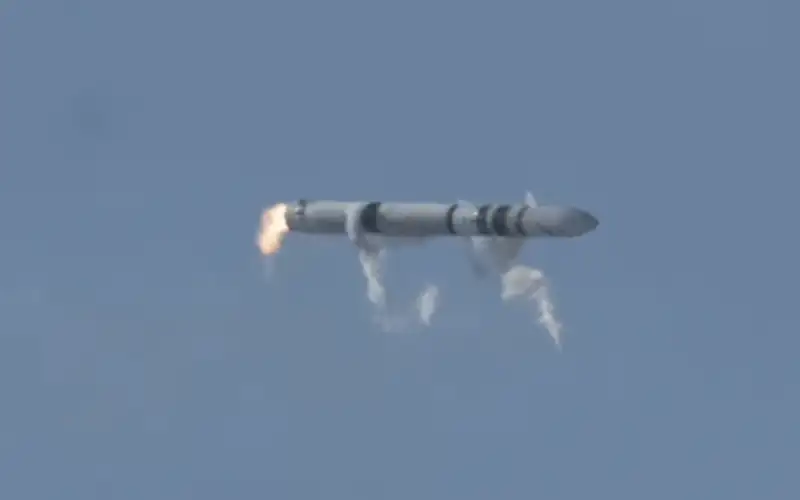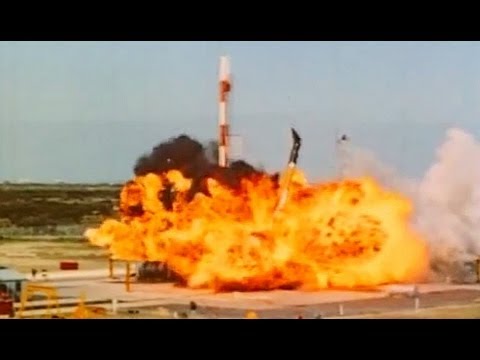
Germany’s Isar Aerospace Rocket Explodes Seconds After Launch in Europe’s First Private Orbital Attempt
Europe’s First Private Orbital Rocket Launch Ends in Explosion—But the Real Story Is Just Beginning
On March 30, 2025, a 28-meter rocket named Spectrum lifted off from Andøya Spaceport in Norway under the watchful eyes of Europe’s aerospace community. Just 30 seconds later, it spiraled off course, crashed near the pad, and exploded. No payloads. No injuries. Just smoke, silence—and a wave of questions about the future of European commercial space.

At first glance, it looked like a failure. But within aerospace circles and investor boardrooms, the reaction was far more nuanced. For Isar Aerospace, the German startup behind the launch, the outcome was not an embarrassment—it was part of the plan.
What Really Happened During the Spectrum Launch
At 12:30 PM local time, Spectrum, a two-stage, liquid-fueled rocket developed by Munich-based Isar Aerospace, rose from the snow-covered landscape of northern Norway. Designed to carry up to 1,000 kilograms to low Earth orbit (LEO), the rocket relied on a cluster of nine Aquila engines running on liquid oxygen and propane—a rare but eco-friendlier propellant choice in a market dominated by kerosene and methane.
Low Earth Orbit (LEO) is an orbital region relatively close to Earth's surface, typically extending up to an altitude of about 2,000 kilometers. This area hosts numerous artificial satellites used for various purposes, including Earth observation and communications constellations like Starlink.
Roughly 20–30 seconds into the flight, onboard systems lost control. The vehicle began an uncontrolled tilt, suggesting a failure in the vector control or inertial guidance system. Seconds later, the engines shut down and the rocket plunged back down, detonating near the launchpad at Nordmela. The pad survived. No personnel were harmed.
Despite the dramatic loss, Isar Aerospace quickly labeled the flight “partially successful,” citing the performance of critical subsystems, such as ignition sequences, flight termination protocols, and telemetry streams.
Did you know that a Flight Termination System (FTS) is a crucial safety mechanism used in rockets, drones, and other aircraft? This system is designed to terminate a flight in emergency situations, ensuring that the vehicle does not pose a threat to people or the environment. Equipped with independent components like antennas, receivers, and detonators, an FTS can be activated manually by safety officers or automatically by onboard sensors. It's a vital tool for maintaining safety during space launches, missile tests, and drone operations, preventing potential hazards by either destroying the vehicle or deploying safety measures like parachutes. This technology plays a significant role in safeguarding lives and infrastructure, making it an essential component in modern aerospace and unmanned systems.
Launch Failure or Iterative Progress?
For industry insiders, test flight failures—especially first flights—are not red flags; they’re stepping stones. Aerospace history is littered with early explosions that laid the groundwork for long-term reliability. SpaceX’s Falcon 1 failed three times before reaching orbit. Astra, Firefly, and even legacy programs like Proton and Atlas experienced early instability.

The logic is straightforward: ground testing is limited. Flight is the only environment that fully replicates the thermal, aerodynamic, and dynamic forces a rocket endures. Many companies now favor a “launch-learn-repeat” model over exhaustive ground tests, which require more time, infrastructure, and capital.
The "Fail Fast, Learn Faster" philosophy in aerospace, exemplified by companies like SpaceX, emphasizes rapid iterative development. This approach accepts failures during testing and launches as valuable learning opportunities, enabling quicker refinement through a "launch, learn, repeat" cycle.
In this case, the Spectrum launch validated several mission-critical milestones: a clean ignition, coordinated stage control, real-time telemetry, and controlled engine shutdown via the Flight Termination System (FTS). For a first attempt, that’s data gold.
Engineering Ambition and Unforced Risks
Where Isar stands out is in its propulsion architecture. Instead of opting for traditional kerolox or methalox fuels, the company selected a LOX-propane mix. This choice suggests a bet on sustainability and operational flexibility, but it raises valid questions about performance efficiency and thermal management. Propane has a lower impulse-to-weight ratio than methane or kerosene and comes with added complexity in storage and pressurization—making it an unconventional choice for first-stage propulsion.
LOX/Propane offers specific pros and cons as a rocket fuel, often noted for being cleaner-burning than traditional kerosene. Its performance, cost, and handling characteristics create trade-offs when evaluated against alternatives like methane or kerosene, including considerations for environmental impact.
More notably, Spectrum uses a nine-engine cluster on its first stage. While this architecture can offer higher redundancy and scalability, it also increases the difficulty of balancing thrust and managing control surfaces during liftoff. That complexity likely contributed to the instability observed during the rocket's brief flight.
It’s not just about what went wrong. It’s about what Isar is trying to prove—and how ambitious that technical roadmap really is.
Investor Sentiment—Short-Term Shock, Long-Term Play
From an investment perspective, launch failures are often misunderstood. They make headlines, but rarely rattle seasoned capital.
Table: Key Trends in Venture Capital Investment in European Space Tech Startups (2019–2024)
| Category | Details |
|---|---|
| Investment Growth | Annual VC funding grew from €215M (2017–2019) to an average of €575M (2020–2021), peaking at €1.1B in 2022. |
| Late-Stage Funding | Increase in Series C and D rounds reflects ecosystem maturity and larger funding rounds. |
| Geographic Leaders | Germany, France, UK, and Italy lead; Munich and Toulouse are key innovation hubs. |
| Top Startups | ICEYE (€119.5M), Celestia Aerospace (€100M), The Exploration Company (€150M), Isar Aerospace ($70M). |
| Key Investors | Seraphim Space, Primo Space Fund, Alpine Space Ventures, EIC Fund, Bpifrance, Airbus Ventures. |
| Sectoral Focus | Satellite constellations, reusable rockets, space debris removal, climate data analytics. |
| Emerging Areas | Lightweight aerospace materials (e.g., iCOMAT), sustainable aviation tech (e.g., hydrogen-powered aircraft). |
| Challenges | Europe lags behind the U.S. in mega constellations and private sector involvement; geopolitical factors impact priorities. |
In the short term, investor sentiment around Europe’s emerging space startups could dip, especially for publicly exposed companies or suppliers. But the long-term implications hinge less on the explosion and more on how Isar responds: Does it rapidly iterate? Can it maintain momentum? Does the second launch show improvement?
This “fail-fast, learn-faster” ethos—pioneered by Silicon Valley and normalized by SpaceX—is gradually becoming a standard in aerospace investing. Companies that absorb failure and adapt quickly are often stronger bets than those who delay launches in search of perfection.
For Isar, the path forward must be marked by speed. Investors will want to see a second launch in months—not years—with incremental fixes and improved flight stability. Any slowdown could be interpreted as a deeper technical or financial fragility.
Competitive Implications for Europe
The Spectrum incident also exposes a broader truth: Europe is racing to stay relevant in a two-speed space economy dominated by the U.S. and China. While the EU has invested heavily in the European Space Agency (ESA) and legacy programs like Ariane, its commercial sector remains fragmented and slow-moving.
Table: Annual Orbital Launch Attempts by Major Regions in 2024
| Region | Launch Attempts | Successful Launches | Notable Details |
|---|---|---|---|
| USA | 94 | 92 | SpaceX dominated with Falcon launches; minor delays in Q3. |
| China | 68 | 66 | Long March series led the majority of launches. |
| Europe | 2 | 1 | Ariane 6 debuted with partial success; Vega retired. |
Isar Aerospace was hailed as a frontrunner in Europe’s push for private-sector leadership. Backed by over $200 million in funding and operating out of Germany—a country once synonymous with rocketry—it’s now under even more scrutiny. The success of this company could define whether Europe can compete on speed, innovation, and cost-efficiency.
Comparison of ESA and Commercial Space Launchers in Europe
| Aspect | ESA (Ariane & Vega) | Commercial Players |
|---|---|---|
| Funding | Public-private partnerships via ESA | Mix of private investment & ESA co-funding |
| Technological Focus | Traditional rockets | Reusable technologies |
| Cost Efficiency | Higher costs due to non-reusability | Lower costs with reusable designs |
| Innovation | Limited by institutional focus | Driven by competition and market demands |
| Market Reach | Institutional & commercial payloads | Primarily commercial payloads |
| Key Initiatives | Ariane 6, Vega-C | Isar Aerospace, Orbex, Rocket Factory Augsburg |
| Reusability Efforts | Themis project (early stage) | Advanced plans for reusable rockets |
If Isar pulls off a turnaround, it could spark a broader wave of private space investment across the continent. If not, the region risks falling further behind its global peers.
Toward a Greener, Smarter Space Economy
Despite the setback, Spectrum’s choice of liquid oxygen and propane hints at where Europe might seek differentiation: environmental leadership. While not perfect, LOX-propane emits fewer particulates and toxic byproducts than traditional fuels like UDMH or RP-1. If future iterations improve performance while maintaining eco-credentials, Isar could position itself as a launch provider of choice for environmentally-conscious satellite operators.
Moreover, the industry is shifting toward multi-use platforms. A reusable upper stage, low-toxicity fuels, and modular service modules could give companies like Isar an edge if they embrace these trends early.
Failure, Framed Differently
The Spectrum rocket did not reach orbit. But the launch validated key systems, exposed engineering gaps, and—most importantly—started the feedback loop necessary for real progress.
Europe’s commercial space ambitions are still young, and this moment is less a setback than a stress test. The real metric for success won’t be this launch—it will be how fast Isar Aerospace comes back from it, what it learns, and how it communicates that journey to investors, regulators, and partners.
In the meantime, the message to investors is clear: This wasn’t a failure—it was the first iteration. And in aerospace, iteration is everything.